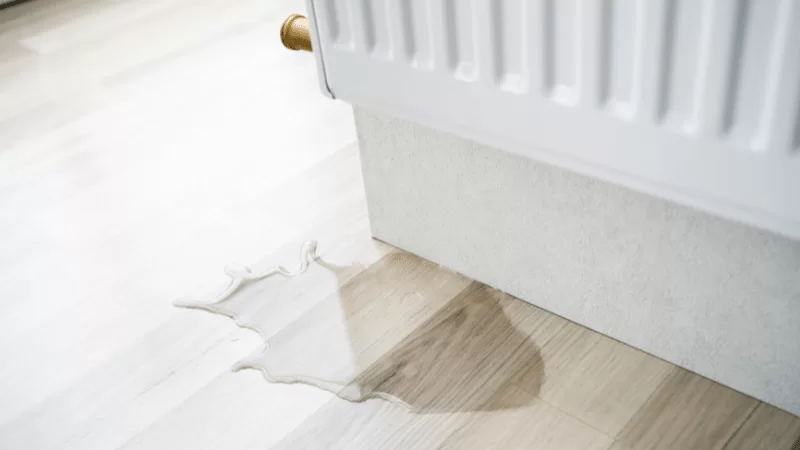Mold growing on grout is more than just an eyesore, it can also pose serious health risks and signal deeper moisture problems in your home. Grout, with its porous texture and constant exposure to water in areas like bathrooms and kitchens, creates the perfect breeding ground for mold and mildew. Left unchecked, it can lead to persistent odors, staining, and even health issues from exposure.
In this blog, we’ll guide you through the most effective ways to prevent mold from forming on grout and offer proven techniques to safely and thoroughly remove it when it appears. Whether you’re tackling a small spot or a larger mold issue, these tips will help restore cleanliness and peace of mind.
Why Does Mold Grow on Grout?
Mold grows on grout primarily because grout is porous and often found in damp, humid environments which are ideal conditions for mold growth. Here’s a breakdown of why grout is so susceptible:
- Moisture Exposure: Grout is commonly used between tiles in bathrooms, kitchens, and other high-moisture areas. Frequent contact with water from showers, sinks, or steam creates a damp surface where mold thrives.
- Porous Surface: Grout absorbs water and can retain moisture for long periods, especially if it’s unsealed or the sealant has worn off. This makes it easier for mold spores to settle and grow.
- Lack of Ventilation: Poor airflow in bathrooms or around tiled surfaces allows humidity to linger, creating a warm, wet environment where mold can flourish.
- Soap Scum and Organic Debris: Grout lines often collect soap residue, skin cells, and dirt, which provide nutrients that mold needs to grow.
- Infrequent Cleaning: When grout isn’t cleaned regularly, moisture and debris build up, giving mold a better chance to establish and spread.
Mold Removal for Grout
When mold appears on grout, quick action is key to preventing it from spreading or causing long-term damage. Because grout is porous, mold can penetrate below the surface, making it harder to eliminate with surface cleaning alone. In this section, we’ll cover safe and effective methods for removing mold from grout, whether you’re dealing with light mildew or stubborn black mold.
Baking Soda
Baking soda is a natural, non-toxic cleaning agent that’s gentle on grout but tough on mold. Here’s how to use it effectively:
- Make a Paste
Mix baking soda with a small amount of water to create a thick paste. It should have a spreadable consistency, like toothpaste. - Apply to Grout
Spread the paste directly onto the moldy grout lines using your fingers or a brush. Let it sit for 10–15 minutes to allow the baking soda to penetrate and loosen the mold. - Scrub Thoroughly
Use a scrub brush or old toothbrush to scrub the grout in a circular motion. This helps lift the mold from the surface and pores of the grout. - Rinse with Water
Wipe the area clean with a damp cloth or sponge, and rinse with clean water to remove any remaining baking soda residue. - Optional: Add Vinegar for Stubborn Mold
For tough mold spots, spray white vinegar over the baking soda paste before scrubbing. The fizzing reaction helps break down mold more effectively. (Avoid this if your grout is unsealed, as vinegar can weaken it over time.) - Dry the Area
Mold thrives in moisture, so be sure to dry the area thoroughly with a towel or let it air dry with good ventilation.
Bleach
Bleach is a powerful disinfectant that can kill mold spores and restore the appearance of stained grout. However, it should be used with caution due to its strength and potential to damage surfaces or irritate skin and lungs.
- Dilute the Bleach
Mix one part bleach with three parts water in a spray bottle or bowl. (For heavily stained grout, you can use a slightly stronger solution but avoid using pure bleach directly on grout too often.) - Apply to Moldy Grout
Spray the bleach solution directly onto the moldy grout or apply it with a sponge. Let it sit for 5–10 minutes to allow the bleach to penetrate and disinfect. - Scrub the Area
Using a scrub brush or toothbrush, scrub the grout lines thoroughly to lift mold and remove discoloration. - Rinse Well
Wipe the area with a clean, damp cloth or rinse with water to remove any bleach residue. - Dry Completely
Dry the grout with a towel and ensure the area is well-ventilated to prevent moisture from building up again.
Important Tips:
- Always wear gloves and ensure proper ventilation when working with bleach.
- Avoid mixing bleach with other cleaners, especially ammonia, as this can create dangerous fumes.
- Do not use bleach on colored grout, as it may cause fading or discoloration.
While bleach is effective for killing mold on the surface, it may not prevent it from coming back if the underlying moisture issue isn’t resolved.
Hydrogen Peroxide
Hydrogen peroxide is an effective and safer alternative to bleach for killing mold and brightening grout. It works as a natural antifungal and antibacterial agent, making it ideal for tackling mold without harsh fumes.
- Apply Hydrogen Peroxide
Pour hydrogen peroxide into a spray bottle and spray it directly onto the moldy grout. You can also apply it with a cloth or sponge if needed. Let it sit for 10–15 minutes to break down the mold. - Scrub the Grout
Use a scrub brush or toothbrush to scrub the grout lines. For extra cleaning power, you can sprinkle baking soda onto the grout before scrubbing, it will react with the peroxide to help lift stains and mold. - Wipe and Rinse
After scrubbing, wipe the area with a damp cloth to remove any residue. Rinse with clean water if necessary. - Dry the Area
Use a dry towel to remove any moisture from the grout and improve ventilation to keep the area dry and mold-free.
Hydrogen peroxide kills mold at the root level without bleaching or damaging most surfaces. It’s also less harsh than chlorine bleach, making it a great choice for regular use, especially in enclosed or poorly ventilated spaces.
Salt
Salt is a natural mold deterrent and mild abrasive that can help scrub away mold from grout while also creating an environment where mold struggles to survive. Although not as strong as bleach or hydrogen peroxide, it’s a gentle, non-toxic option that’s especially useful for light mold growth and regular maintenance.
- Create a Salt Scrub Paste
Mix salt with a small amount of water to create a thick, gritty paste. For added mold-fighting power, you can use lemon juice or white vinegar instead of water. - Apply the Paste
Spread the salt paste generously onto the moldy grout lines. Use your fingers, a spoon, or a sponge to apply it evenly. - Let It Sit
Allow the paste to sit on the grout for 10–15 minutes. Salt draws moisture out of mold spores, helping to dehydrate and kill them. - Scrub the Grout
Use a scrub brush or toothbrush to work the paste into the grout, loosening mold and dirt from the porous surface. - Rinse and Wipe Clean
Wipe the area with a damp sponge or cloth, then rinse with clean water to remove salt residue. - Dry Thoroughly
As with any mold removal, make sure the area is fully dried to prevent regrowth.
Vinegar
White vinegar is a natural, affordable, and highly effective mold killer. Its mild acidity helps break down mold and prevent it from returning, making it a go-to solution for cleaning grout in bathrooms and kitchens.
- Apply Vinegar to the Grout
Pour undiluted white vinegar into a spray bottle and spray it directly onto the moldy grout. Make sure the grout is fully saturated. - Let It Sit
Allow the vinegar to sit on the surface for at least 10–15 minutes. This gives it time to kill mold spores and break down buildup. - Scrub the Grout
Use a stiff brush or toothbrush to scrub the grout lines. For stubborn mold, sprinkle baking soda onto the grout before scrubbing, the reaction with the vinegar adds extra cleaning power. - Rinse and Wipe Clean
Wipe down the area with a damp cloth or sponge, and rinse with warm water to remove any residue. - Dry Completely
Use a dry towel to remove moisture from the grout and ventilate the area to prevent mold from returning.
Vinegar is a natural antifungal that kills around 80–90% of mold species, making it an excellent chemical-free solution for regular grout maintenance and mild to moderate mold issues. Avoid using vinegar on natural stone surfaces like marble or granite, as its acidity can cause damage. Vinegar is best for ceramic tile grout and similar surfaces.
How to Prevent Mold on Grout Lines
Preventing mold on grout is just as important as removing it. Since grout is naturally porous and often exposed to moisture, it’s essential to take proactive steps to keep mold from returning. In this section, we’ll share simple yet effective tips to reduce humidity, improve ventilation, and maintain clean grout lines so your bathroom or kitchen stays fresh, healthy, and mold-free.
- Keep the Area Dry
- After using the shower or sink, wipe down tiles and grout with a towel or squeegee to remove excess moisture.
- Don’t let water pool or sit on surfaces for extended periods.
- Improve Ventilation
- Use an exhaust fan during and after showers to reduce humidity levels.
- Open windows or doors when possible to allow fresh air to circulate.
- Seal Your Grout
- Apply a grout sealer every 6–12 months to create a water-resistant barrier that helps block mold and mildew.
- Ensure grout is fully clean and dry before sealing.
- Clean Regularly
- Clean tiles and grout at least once a week using a gentle cleaner like vinegar, baking soda, or a pH-neutral bathroom cleaner.
- This removes soap scum, body oils, and organic debris that mold feeds on.
- Use Mold-Resistant Products
- When renovating or regrouting, consider using mold-resistant grout and caulk specifically designed for damp environments.
- Fix Leaks Promptly
- Address plumbing leaks or drips right away. Even small leaks can keep the area constantly damp and invite mold growth.
How to Prevent Mold on Shower Grout
Shower grout is especially prone to mold due to constant exposure to water, humidity, and soap residue. To keep mold at bay and maintain a fresh, clean bathroom, follow these effective prevention tips:
- Dry the Shower After Each Use
- Use a squeegee or towel to wipe down tiles and grout lines after every shower.
- Removing excess water reduces moisture buildup, which mold needs to grow.
- Use the Bathroom Fan
- Run the exhaust fan during and for at least 20–30 minutes after showering.
- This helps lower humidity levels and improves air circulation.
- Seal the Grout
- Apply a grout sealer every 6–12 months to create a water-repellent barrier that prevents moisture and mold from penetrating.
- Make sure grout is clean and completely dry before sealing.
- Clean Weekly
- Use a mild anti-mold cleaner or a mix of vinegar and water to clean shower grout weekly.
- Scrub any soap scum or residue, which can feed mold.
- Keep Shower Items Dry
- Avoid leaving sponges, loofahs, or washcloths in the shower where they trap moisture.
- Use shelves or racks that allow items to dry quickly between use.
- Fix Leaks Quickly
- Address any leaky showerheads, pipes, or tiles immediately to prevent water from seeping into grout and behind walls.
- Use Mold-Resistant Grout and Caulk
- When installing or replacing grout, opt for mold- and mildew-resistant products designed for high-moisture environments.
Professional Mold Removal from ServiceMaster DRR
Mold on grout may start as a small spot, but without proper care, it can quickly spread and lead to health concerns, unpleasant odors, and costly damage. Thankfully, with the right tools and preventive habits, you can tackle mold at the source and keep it from coming back. From natural cleaners like baking soda and vinegar to stronger solutions like bleach and hydrogen peroxide, you have a range of effective options to clean and disinfect grout lines. Just as important is consistent prevention such as keeping areas dry, sealing grout, cleaning regularly, and maintaining good ventilation. By combining these removal and prevention strategies, you’ll create a cleaner, healthier environment in your home.
While DIY solutions can be effective for small mold issues, widespread or recurring mold growth often points to a deeper moisture problem that requires professional attention. If you’ve tried cleaning but the mold keeps coming back, or if you’re concerned about potential health risks, don’t wait.
ServiceMaster DRR offers expert mold remediation services designed to eliminate mold at the source, restore damaged surfaces, and prevent future outbreaks. Our trained technicians use advanced tools and proven techniques to safely and thoroughly treat affected areas, including tile and grout. Contact ServiceMaster DRR today for a professional inspection and let us help you reclaim a clean, healthy home environment.

Steve VanDenBerg is the owner of ServiceMaster Disaster Restoration and Recovery. He has over 30 years of experience working within the restoration industry and successfully leading start-ups, turnarounds, acquisitions and mergers, and rapidly growing companies.
Steve earned his BS in Business & Accounting from Calvin University in Grand Rapids, MI and began working for DSI Holdings as their Chief Financial Officer. When Steve began with DSI Holdings, they were running an underperforming ServiceMaster Restore franchise with one location. Steve implemented new policies and procedures for accounting and finance as well as a professional sales plan that increased profits eightfold over his time as the CFO. He was then promoted to President and CEO and in this time, he expanded the company from two locations with $4M in sales to 12 locations and $45M in sales. DSI Holdings became one of the largest disaster restoration companies in the U.S. and helped with major restoration projects throughout the U.S. and around the world.
Steve purchased ServiceMaster DRR in 2015 when the business was in decline. Drawing on his years of experience in turning around struggling ServiceMaster franchises, Steve overhauled our operations, including finance, sales, and marketing, which led to a quick turnaround. Within Steve’s first 24 months, sales increased by 60 percent. Steve also helped greatly improve our operating margins and established a relationship with California’s largest residential insurance company. Under Steve’s leadership, we have become one of the largest disaster restoration providers in California.
Steve has found great success in turning around struggling and stagnant restoration franchises by changing the business model and strategy, greatly increasing sales and profits. Many of the changes he has implemented have even been adopted by the franchisor into their operating model.



